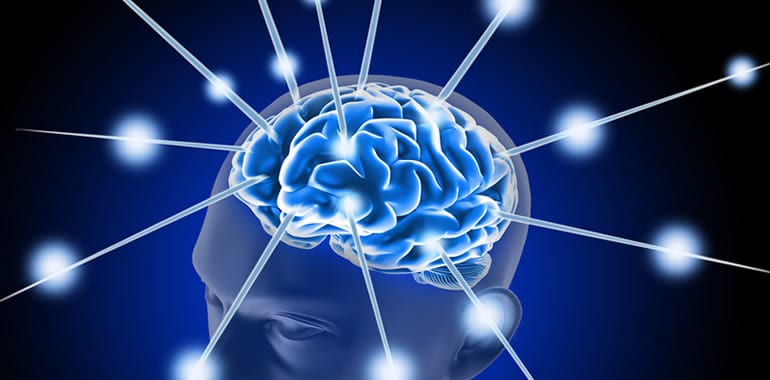
Chronic pain involves changes in the peripheral nervous system (PNS) which conveys nociceptive information to the central nervous system (CNS). Over time, changes occur in the CNS that can cause continuation of the nociceptive information – even if the original stimulus has been removed! For instance, say someone has a very painful ulcer on their calf. The doctor sees the infection is spreading and must amputate the leg to save the person’s life. After the amputation, the patient continues to report pain in the calf from the ulcer. This is called phantom limb pain. Let’s work through the process of how phantom limb pain (and chronic pain) occurs.
A-delta and C fibers are nociceptor unencapsulated receptors (free nerve endings) that respond to noxious stimuli. Noxious stimuli is an actual or potential tissue injury that is likely to cause pain. Nociceptors convert mechanical, thermal, and chemical energy into electrical signals and carry this information to the CNS. Mechanical energy can include compression or tension. Thermal energy includes heat which is caused by inflammation. While chemical energy is a response to the chemicals in the body. The nociceptors are found in/around most tissue including skin, muscle, tendons, joint structures, periosteum, intervertebral disks, and within peripheral nerves.
Nociceptors can begin to have increased responsiveness, which is termed peripheral sensitization. Sensitization of a neuron is characterized by increased spontaneous activity, a decrease in threshold of response to noxious stimuli, an increase in responsiveness to the same noxious stimuli, and/or an increase in receptive field size. So, what a normal nerve might perceive as slightly painful a sensitized nerve may perceive as excruciatingly painful.
Nociceptors then send their information up to the CNS:
- Creating a reflexive response that is coordinated within the spinal cord to withdraw the body from the painful stimulus (i.e. pulling your hand away from a hot stove)
- Ascending nociceptive pathways which take the information up to the brain to be further processed and may trigger
- Descending facilitatory pathways which increase the nociceptive response and can cause referred pain, secondary hyperalgesia, and contralateral hyperalgesia or
- Descending inhibitory pathways which decrease the nociceptive response
More recently, researchers have found glial cells in the CNS which also play a critical role in the processing of nociceptive information. Research indicates that glial cells can release anti-inflammatory factors that help to restore normal nociceptive processing. However, they also release a variety of substances that facilitate nociceptive information. Therefore, glial cells play an important role in both the facilitation and inhibition of nociceptive information in the CNS.
Are you completely confused with all of this and questioning how it applies to your chronic pain? Hold tight – the next blog posts discuss this in further detail regarding specific diagnosis. Or, if you would like to understand more about the pathways involved in chronic pain, please feel free to contact Amy at Physical Therapy for everyBODY at (425)658-4944 or amykonvalinpt@gmail.com. I am passionate about education and would be happy to have a phone conversation with you!



